You might have heard the tales of Persian princes living in wonderful Persian palaces. But have you ever wondered what these palaces look like? You might imagine lush gardens with streams of waters passing through them. Or you might imagine palaces decorated in pure gold and exquisite pictures. Well, if that’s what you think, I’ve got to tell you that to a great extent, you’re right. Chehel Sotun Palace in Isfahan, a city in Iran, is one such palace. Read on to learn about the story of the palace and its garden.
Chehel means 40, in Farsi. The palace has a columned veranda and a pool in its front. When the 20 columns of the veranda are reflected in the pool in front, 20 columns are added to the actual columns and make it 40. Isn’t that smart? Another explanation is that 40 may be used to suggest many. These columns were also modeled after the columns in Achaemenid palaces. In any case, the columns have made the palace’s identity and represent its unique architecture.
History Chehel Sotoun Palace
The early days of Chehel Sotoun Palace date back to the 17th century. It was first built at the time of Shah Abbas the first, in 1614. Shah Abbas the second added some parts to the main building in 1647. Its construction was completed in 1647. However, the palace caught fire in 1706, which resulted in major renovations across the building.
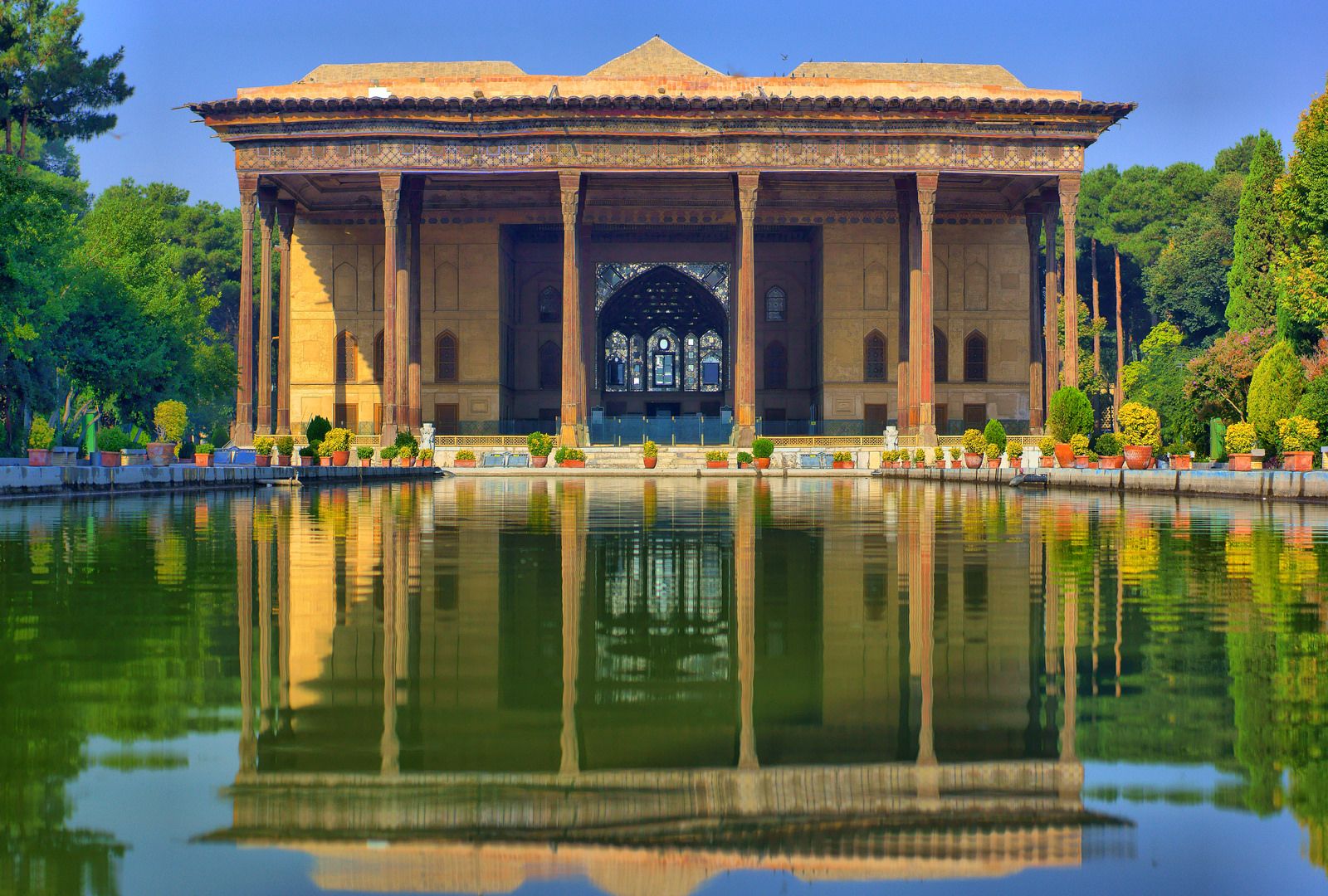
Architecture of Chehel Sotoun Palace
Entering the gates of the Chehel Sotoun Palace in the east, a breathtaking view will stretch in front of you. A rectangular garden where a long pool stretches from the entrance far to the west. Rows after rows of trees proceed the same direction, where a majestic pavilion claims everyone’s attention.
The pavilion itself was built as a reception hall, modeling after the Achaemenid style of columned porch architecture. Its most prominent aspect from the outside is the columned veranda that goes all around the pavilion. These columns are made of wood and hold an intricately designed wooden ceiling. This royal mansion contains a main hall and 10 rooms on both of its floors.
The pavilion opens to the east. If you step on this veranda, look up and around, you will see different types of artwork used in its design. These include: exquisite Persian and European styles of painting, fretwork, inlaid designs, and mirrorwork. There used to be a small pool on the eastern veranda, before the entrance to the main hall; but it’s covered today.
Before entering the main hall, there is a small recess called the mirror hall. You will see beautiful pieces of 16th-century mirrors, all over the place.
The Mirror Hall is, in fact, the entrance to the main hall, which was also called the Throne Hall. You’ll enter a world of colors, patterns, and images captured in a spacious vaulted hall. All the walls are covered by meticulously painted frescoes, each telling a story.
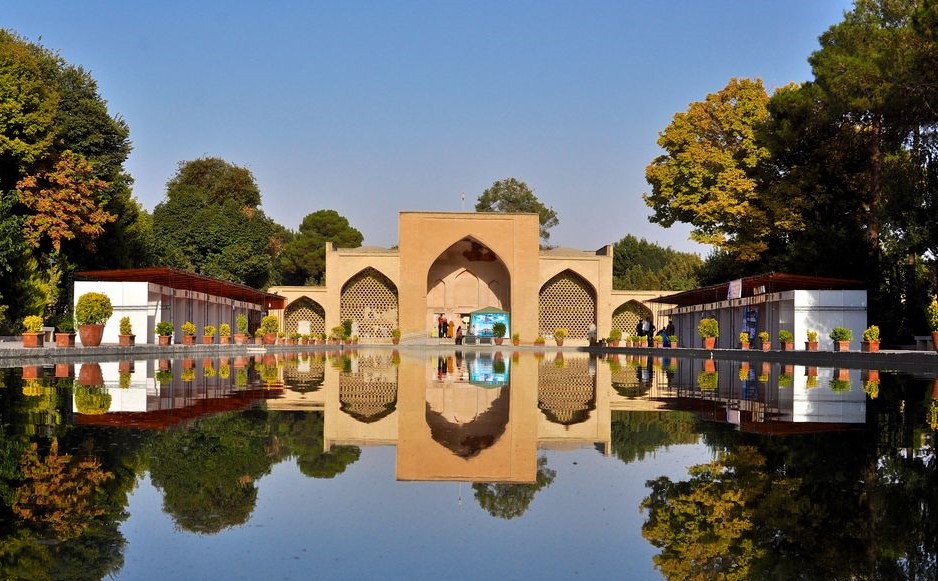
Paintings of Chehel Sotoun Palace
The paintings and frescoes of Chehel Sotoun Palace date back to the Safavid and Qajar periods (17th-19th centuries). Most of these illustrations depict scenes of royal feasts as well as the Iranian wars fought against different nations.
You can travel in time with these vividly painted frescos. Let’s see how the battle of Chaldiran between the Iranians and Ottomans went on the eastern wall. After that, you can welcome the ruler of Turkestan in a feast organized by Shah Abbas I. A little later on the western wall, you can join the ceremony of Shah Tahmasb I, in honor of the Indian ruler, Homayoun. Just the same, you can see 2 more battles and 1 more royal celebration. All around the frescoes have been framed by Iranian miniature, which lived its high time during the Safavid period.
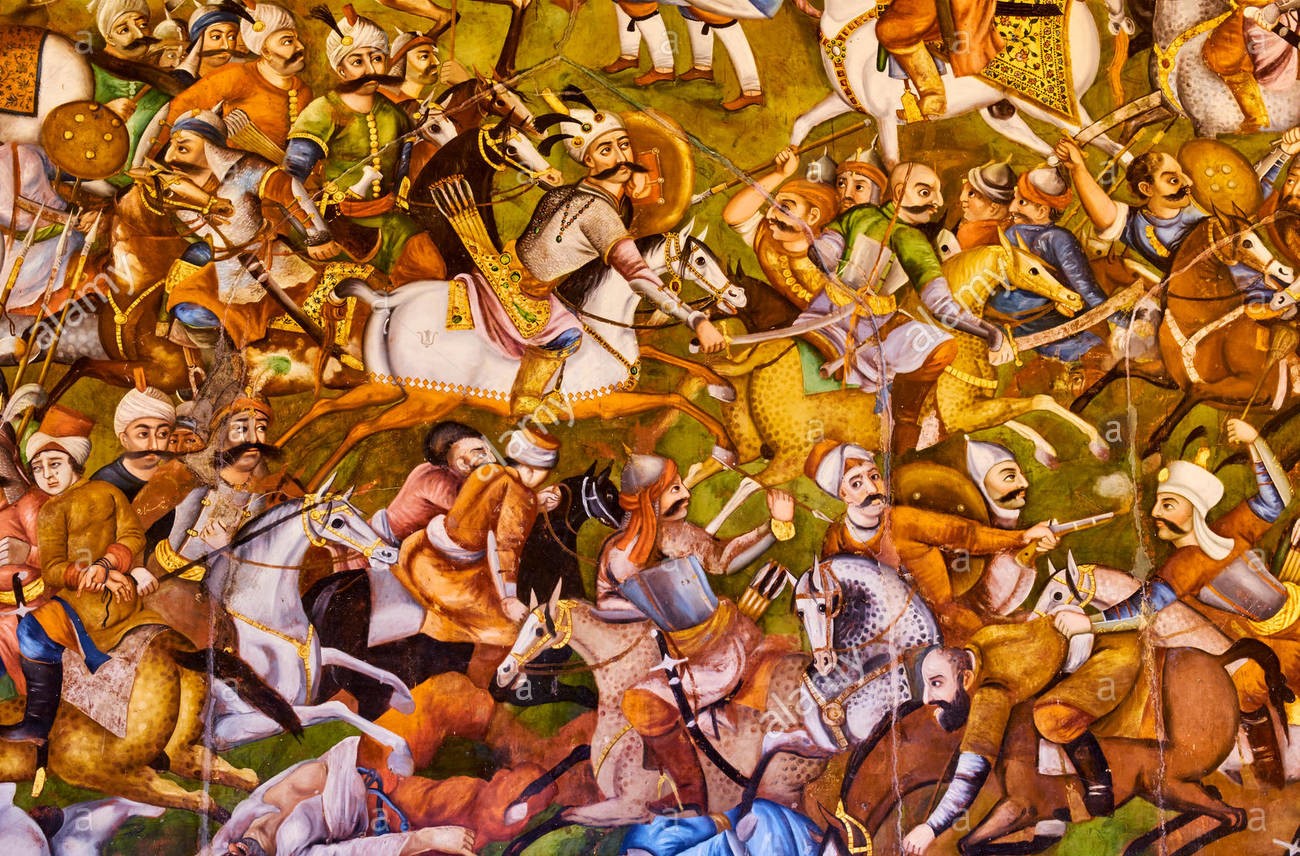
Garden of Chehel Sotoun Palace
Chehel Sotoun Palace was built in what is today known as the Persian Garden. The layout for this kind of garden dates back to the time of Cyrus the Great, 6th century BC. It is built to represent the unity of man and nature, the earth and the heavens. The Persian Garden is built in a rectangular enclosed area, and streams of water divide it into 4 sections. While same-size trees are planted in each section of the garden, a pavilion is also built in the garden.
The Persian Garden is inscribed as a UNESCO World Heritage Site. Chehel Sotoun Palace’s garden is one of the 9 gardens in Iran which were included on the list.
Sightseeing at Chehel Sotoun Palace
Visiting the palace will be one of the most rewarding experiences you may have in Isfahan. Just the moment you step inside the palace’s grounds, you will leave all the machine hustle of our world outside.
You can walk in the garden and enjoy a relaxing time in the company of lush green trees and colorful flowers. Then proceed to the palace. The amazing 400-year-old mansion has more to offer than the eye meets. You can go around the building and look at its beautiful paintings. At the same time, don’t forget to pay attention to its genius architectural details.
Once inside the veranda, make sure to see the mirror hall before the entrance. Then, once inside the hall, you will be greeted by a beautiful hall where the walls are all covered in pictures and frescoes.
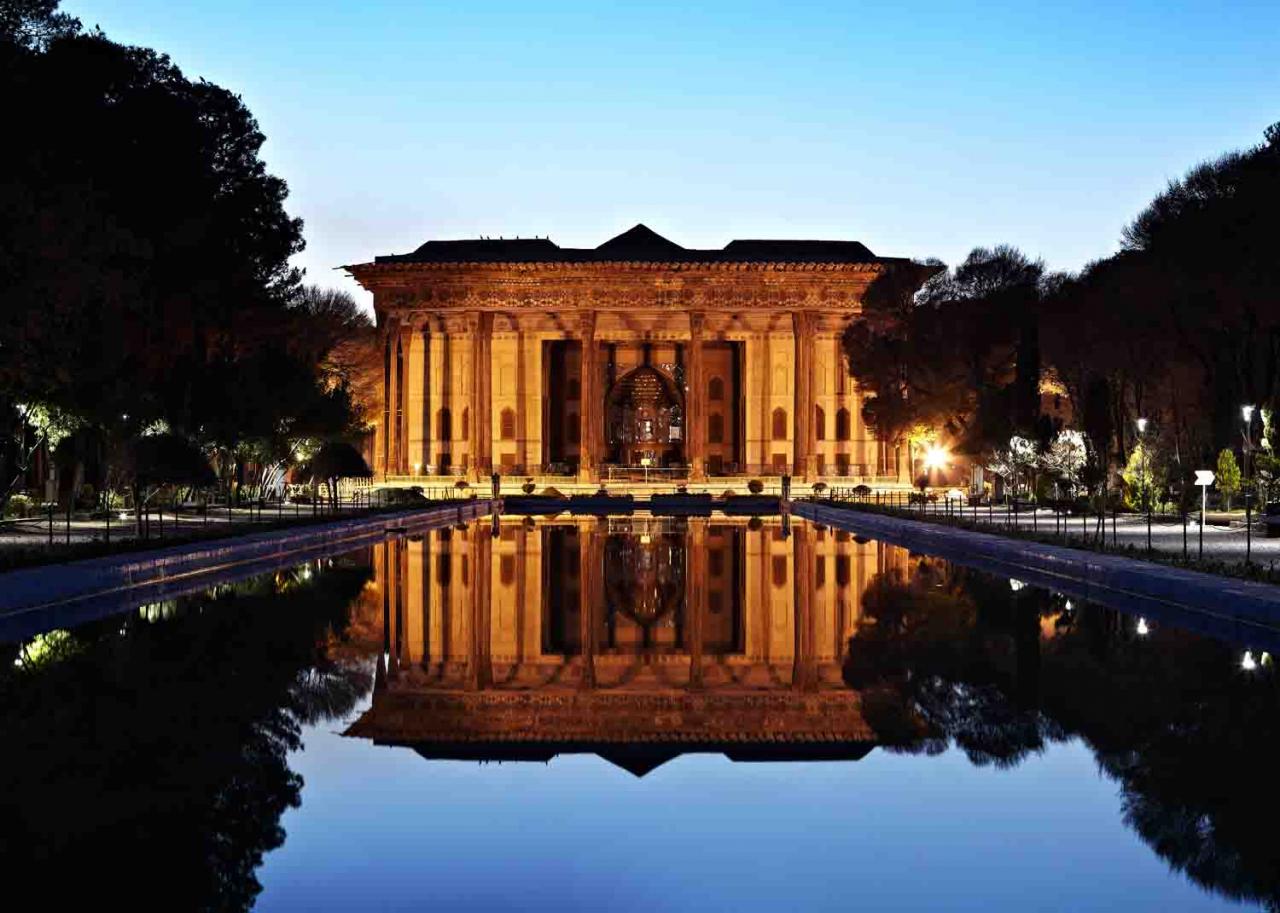
Address of Chehel Sotoun Palace
Chehel Sotoun Palace can be found at the address below:
Chehl Sotoun Palace, Ostandari Street, Isfahan, Esfahan, Iran
Working hours of Chehel Sotoun Palace
Chehl Sotun Palace is open at 9:30 in the morning and closes at 3:45 in the afternoon.
Entrance fee for Chehel Sotoun Palace
The entrance fee of Chehel Sotoun for foreign travelers is 30,000 tomans.
FAQ
Chehel Sotoun is open to visitors from 9:30 in the morning. You can visit the garden during the day and make sure to see everywhere by 3:45 in the afternoon. Then the area closes.
Chehl Sotun is located in the historical heart of Isfahan. This means, really good hotels can be found nearby. To name a few of these hotels:
• Abbasi hotel
• Keryas traditional house
• Partikan apartment hotel
• Piroozy hotel
• Ghasre Monshi hotel
• Safir hotel
• Sheykhbahaie hotel
• Parsian Ali Qapu hotel
• Safavi hotel
• Kianpour historical house
• Sepahan hotel
• Zohre hotel
• Mahbibi house
• Parsian Kowsar hotel
You can find a plenty of restaurants near the hotel. Check these out:
• Namakdan café and restaurant
• Azam Beryani
• Bagh Homayoun café and restaurant
• Ghasedak café
• Radio café
• Sogoli traditional café and restaurant
• Roozegar café
• Azadegan tea-house, Chah-e Haj Mirza
Chehel Sotun Palace is within walking distance from some of the notable historical attractions of Isfahan. These include:
• Naqsh-e Jahan Square
• Chahar Bagh Promenade
• Hasht Behesht Palace
From here, you can also easily reach the following attractions:
• Atiq Mosque
• Si-o-Se Pol Bridge
• Khaju Bridge

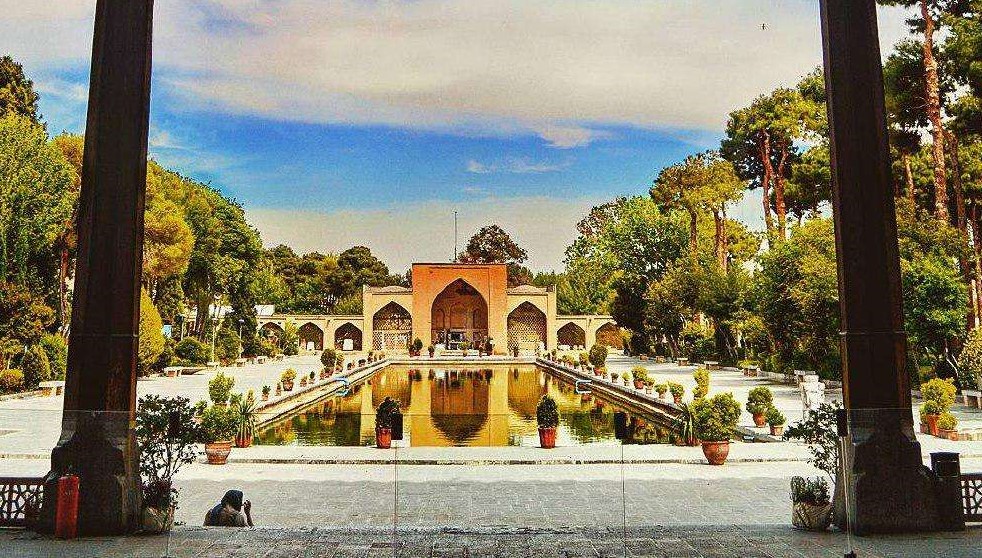

Comment (0)